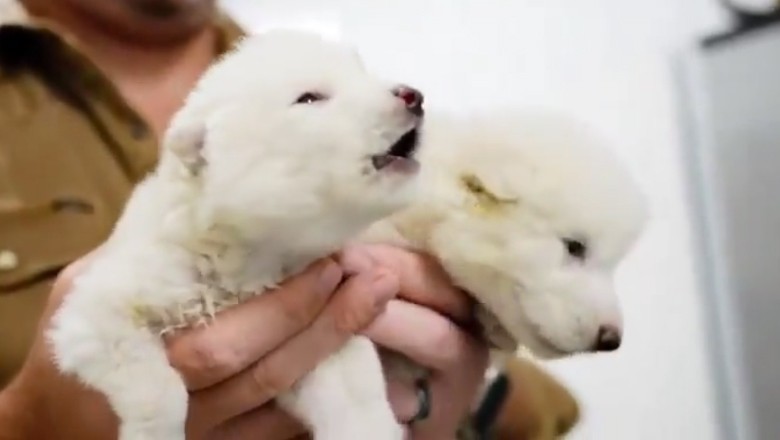Scientists revive Ice Age predator, the dire wolf, after 12,500 years of extinction

Web Desk
|
9 Apr 2025
In a groundbreaking development, scientists from the American biotechnology company Colossal Biosciences claim to have resurrected a creature resembling the extinct ‘dire wolf,’ a predator that disappeared over 10,000 years ago, through the use of ancient DNA, cloning techniques, and genetic modification.
The company revealed that three genetically engineered wolf pups, designed to mimic the dire wolf, are currently being raised at an undisclosed location in the United States.
The cubs, named Romulus, Remus, and Khaleesi, are between three and six months old.
Sporting white fur and powerful jaws, the pups currently weigh around 80 pounds and are expected to grow up to 140 pounds in adulthood, closely matching the size of the original dire wolves, which were notably larger and more robust than modern gray wolves.
Once dominant predators in North America, dire wolves were known for their massive build and formidable strength.
To revive their traits, Colossal’s scientists analysed ancient remains, including 13,000-year-old teeth from Ohio and a 72,000-year-old skull discovered in Idaho.
Read: Australian scientists create super flies to eat trash and save the planet
Using this data, researchers genetically modified blood cells extracted from a living gray wolf.
According to Colossal’s lead scientist, Dr Beth Shapiro, the modified genetic material was inserted into canine egg cells, which were then implanted into surrogate dogs. Sixty-two days later, the genetically engineered pups were born.
Scientist Matt James from Colossal explained that although the new animals are anatomically similar to dire wolves, they lack the behavioral traits of their extinct ancestors.
“They won’t know how to hunt deer or elk, simply because they never had the chance to learn those survival skills,” he said.
However, independent experts have raised concerns about the accuracy of calling these animals “revived” dire wolves.
Check: Scientists achieve breakthrough in producing 'butter from air'
According to NBC News, Dr Vincent Lynch, a biologist at the University at Buffalo, criticised the claim, stating: “All you can do now is make something look superficially like something else”, but that doesn’t mean you have brought it back.
Similarly, wildlife scientist Philip Seddon from the University of Otago in New Zealand called the animals “genetically modified gray wolves,” rather than true dire wolves.
Paleogeneticist also from Otago Dr Nic Rawlence pointed out the limitations of ancient DNA.
“The DNA extracted from the fossil is far too old for cloning,” he said. “What Colossal has actually produced is a hybrid gray wolf with some dire wolf-like features, such as a larger skull and white coat.”
Despite the skepticism, Colossal Biosciences remains committed to its mission of reviving extinct species and has previously announced similar efforts targeting the woolly mammoth and the Tasmanian tiger.












Comments
0 comment